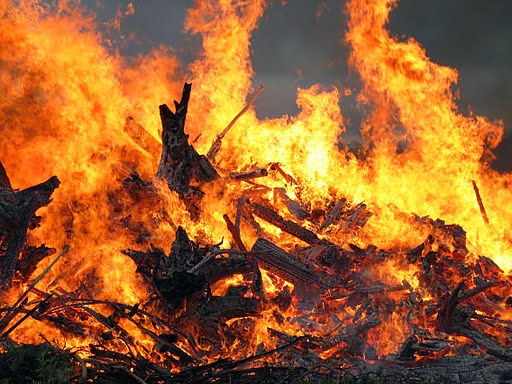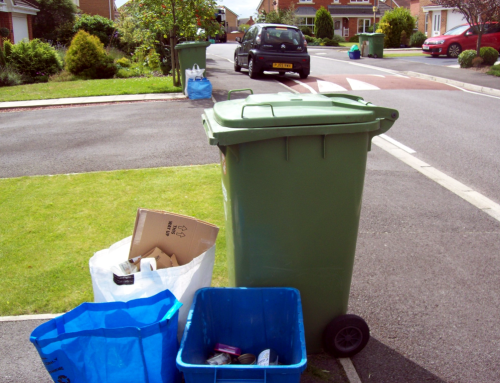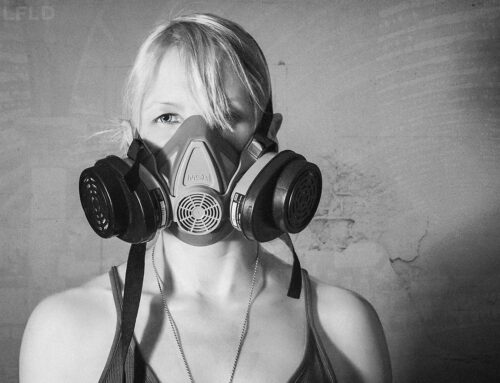The whizz and pop of fireworks; sparklers; mulled wine; and of course gathering around the bonfire to keep warm: the annual celebrations on November 5th are a firm favourite in the Sherrington household. For my children it’s all great fun and for me, while I have reservations about what is being celebrated, Guy Fawkes Night evokes happy childhood memories of building and lighting bonfires with my grandfather. For those reasons, although I’m now aware of the damage unrestricted bonfires can do to our health, I wouldn’t want to deny my children the same enjoyment. Refusing them a bonfire on November 5th would be a crime equal to pretending the Tooth Fairy was bankrupt, or setting the dogs on the Easter Bunny. But I would like to see the time around November 5th, and other events of similar importance to communities across the UK, kept as an exception to a wider crackdown on polluting bonfires at other times of the year.
Ce n’est pas un bon fire
Since the passing of the Clean Air Act in 1956, Britain’s air has indeed become cleaner. No longer are we gripped by killer smogs or showered with soot from thousands of domestic coal fires – although the trend in recent years towards domestic wood burning may be rolling back some of these gains. The humble bonfire, however, is a different, and altogether less regulated, beast. Research commissioned for Defra defined a bonfire as:
“An outdoor fire, either celebratory or for destroying waste”
and pointed out that:
“bonfires discharge emissions at ground level in an uncontrolled manner”.
The uncontrolled burning means that combustion is often poor. At the start, the material may contain a lot of moisture and produce a good deal of smoke as it burns and smoulders at low temperatures. As it catches, the bonfire will burn hotter and cleaner, but towards the end of its life, ash restricts the flow of oxygen and leads to increased amounts of smoke and particulates.
Because the smoke is emitted at ground level, it is not quickly and widely dispersed in the way that it is from a chimney. We all know what it’s like to have streaming, stinging eyes when the wind changes direction and we get caught in the smoke from a bonfire – but few of us realise just how bad for us this smoke can be.
Wood – suggest you avoid
A simple domestic bonfire burning clean wood and dry leaves is probably the least worrying kind of open burning, but all the evidence indicates that any exposure to woodsmoke can be bad for us. Studies by Zelikoff, Danilesen, Bolling and numerous others indicate that wood smoke is high in particulate matter that causes severe damage to the heart and lungs, including lung cancer. A Mexican study found that long term exposure to woodsmoke may have the same effects as persistent tobacco use. Smoking is regulated for health reasons, and we seek to prevent children being exposed to tobacco smoke – yet we cheerfully let them gather around the bonfire!
However, November 5th, Beltane, and Eleventh Night (amongst others) only come round once a year, and the smoke isn’t something many of us find addictive – so perhaps we shouldn’t be too concerned. Moreover, when assembling firewood for the occasion, I would imagine that most people at least try not to burn anything too unpleasant. After all, the main focus is on entertainment rather than dealing with waste.
Unfortunately, bonfires do take place at other times of the year, often with entertainment, or indeed warmth, very much a subsidiary concern. According to the Defra study quoted above, domestic and trade bonfires can commonly comprise municipal and industrial waste, including car body components. The (inevitably largely unknown) mix of materials being combusted may lead to the release of dioxins – which can be highly toxic to humans even in very small quantities. In this respect the Defra report further notes that:
“Dioxins are created when metal containing ashes are held at moderate temperatures between 200°C and 350°C in contact with incompletely combusted organic matter such as soot. Smouldering bonfires provide the correct conditions for dioxin formation.”
Most ashes do contain trace metals, and a report for Defra in 2010 on sources of dioxins stated that:
“There is a growing body of evidence that small scale combustion of waste is the dominate source in the UK now that industrial sources have been effectively regulated.”
No flaming red tape?
Of course, there is regulation covering bonfires, but it is not resulting in clear messages about what is and is not allowed. Councils give widely varying guidance on the legislation, and enforcement is problematic. While councils regularly follow up on complaints, very few result in any meaningful action.

Ceci n’est pas un bon fire: backyard burning releases dangerous pollutants. Photo by Janna Karaste, via Wikimedia Commons.
The Defra bonfire report found that “From a total of 29,147 complaints made in 2000, only 300 notices were served and five prosecutions brought to court.” The problem seems to be that councils must prove that an individual caused a statutory nuisance, which is not straightforward.
The study included the results of a survey in which local authorities suggested ways that bonfires might be better dealt with. Because of enforcement difficulties, most councils currently take an education-led approach, which does not seem to be very effective. 39% wanted new powers to introduce bans on home burning for certain types of waste. However, this might still lead to enforcement difficulties associated with proving that banned waste was involved, and an outright ban would probably be far more effective at reducing air pollution. 33% wanted clearer legislation, such as an extension of the Clean Air Act 1993 to include a ban on dark smoke emissions from domestic properties. Also, the use of bylaws was suggested as a control on bonfires in areas with air quality problems.
Ban fires?
In fact, I suspect the power to ban bonfires may already exist. The much amended Environmental Protection Act 1990 says that persons (including householders):
“Shall not treat, keep or dispose of controlled waste [or extractive waste] in a manner likely to cause pollution of the environment or harm to human health”.
So technically, since commercial and household waste (including garden waste) is controlled waste, and bonfires represent both a source of pollution to the environment and a danger to human health, doesn’t that mean they are prohibited by law?
Whether or not this interpretation is correct, it is certainly not widely shared, and without stern guidance or new legislation, no serious restriction on our national proclivity for burning things outdoors seems likely. Restrictions on backyard burning, even if just in urban areas, might seem a bit like cancelling Christmas, but the problems associated with them are too important to ignore. For our own health, we really should be taking this issue seriously, and that means stepping up the legislation.
Seeking to ban bonfires on any bonfire night is to my mind a non-starter, for good reason. But perhaps a workable proposal would be make November 5th and other such dates special, while cracking down on polluting bonfires at other times of the year. Given that Guy Fawkes Night celebrates the successful uncovering of a plot against Parliament, perhaps one of our more populist MPs, particularly one who regularly expresses concern about back yard burning, might want to champion the cause of limiting bonfires to special occasions?







There appear to be two questions. One, if fires are permitted in gardens and at community events under what conditions? Two, is there a solution to the problem of burning man-made materials which release persistent organic pollutants like dioxins?
As Chris notes an occasional fire is probably not doing anyone significant harm. In any case what harm may result should be compared with similar sources of harm not least that caused by emissions from millions of vehicles in our towns and cities. How many fires at any one time may perhaps reflect the character of the built environment, the weather, and the size of the fire. If it is assumed that beyond a certain number fires will cause a nuisance and worse then one solution, with a tip of the hat to Coase, might be to issue fire rights to households and let them trade away to reach an optimal solution.
The second question raises the issue of enforcement. As Chris has pointed out the negative approach is all but useless. The root of the problem is regulation of materials and waste streams. In principle regulation could – and should – prohibit materials requiring specialist disposal from entering the public waste stream, or any waste stream if we are to embrace sustainability wholeheartedly. However, given that there are huge quantities of nasty stuff already out there what can be done to ensure it is appropriately handled rather than burned in backyard fires while delighted kids gaze on eating their toffee apples?
Burning rubbish is attractive because it is personally free and the costs are socialized as environmental externalities. So either fires must be explicitly priced, which is perhaps rather difficult and does not deal with the problem of inappropriate waste disposal. Or the waste must be explicitly priced such that the incentive for correct disposal exceeds the transaction costs. Therefore, if the negative enforcement apparatus was dismantled and the savings used to finance a bounty for proper disposal then citizens may be encouraged to either deposit such materials with specialists or hold them until specialists collect.
Providing a positive regime for managing and hopefully reducing impacts may also foster a more receptive mindset among the public by removing the sense of confrontation and oppression which inevitably accompanies enforcement mechanisms, particularly when directed towards matters which people may see as completely normal and benign. If a cooperative atmosphere did follow a positive regime then environmental education efforts might be better received and environmental literacy and concern increase.
Closer to home, how do the Dutch, Danes and Swedes deal with the matter?
Or if the enforcement system is preferable then its effectiveness might be enhanced by offering or increasing rewards for tip-offs, and perhaps even providing neighbourhood environmental bounty hunters with kits to collect evidence? Such approaches have proven effective in local trials in China. Of course China is a very different place and so are the pollutants in question.
All that said these solutions are costly and not simple. What could be learned from in-depth discussions with the public, perhaps around a friendly fire one evening?
Deposit-refunds for treated timber products might incentivise return over burn?
Nice opinion piece and makes me miss the whole Bonfire night thing, living on the other side of the world.
In general I’m much in favour of any kind of action that would reduce air pollution. But when I was a kid we had a lot of trees in our garden, and the annual waste from leaves, fallen branches, whole trunks at times from storms and so on came to a huge quantity. Putting it on a bonfire was both a fun and a practical way to get rid of a lot of this. The larger logs would go on the log fire indoors. I can see where you’re coming from on this one, but its difficult to see a scenario where realistic legislation could be brought in on this one, or how you’d quantify the burn at home vs send to a dump issue for garden waste. Moreover, if a certain limited number of days were allocated for permitting burning as ‘festivity’ you may find a huge concentration of smoke on those days, possibly more troublesome than the initial problem. Personally I’d probably just get round it by chucking on a couple of spuds on my bonfire and recategorising it as a barbecue.
Thanks Matthew
We also get lots of fallen leaves and branches, but fortunately no whole trunks at present. Obviously it’s down to personal preference, but we tend to compost the leaves, use the larger branches for making log pile habitats for invertebrates (which the children then take apart on their regular ‘bug hunts’), and the smaller branches and twigs for making ‘dead hedges’, again with biodiversity in mind. I guess it depends what you want to use your garden for – and again I can’t deny that bonfires are good fun for kids. For the kind of material you describe (virgin wood) I can’t really see a great problem if people were to stockpile material for special occasions (which probably already happens to a large extent). When it comes to the less desirable items, e.g. treated fence panels, or other forms of waste, I would imagine there would be a limit to the amount people would store in anticipation of a special occasion, so you might find that less would get burnt in the course of any year.
I agree it would be a challenge to get workable legislation in place, but do feel it’s an area that merits exploration. The issue of exemptions would definitely be tricky – how to define a ‘special event’, and, as you say, what to do about ‘BBQs’!
Regards
Chris
Chris, Great minds were clearly thinking alike on 5th November. George Monbiot was tackling a similar theme in the Guardian yesterday:
http://www.theguardian.com/environment/georgemonbiot/2013/nov/05/celebrate-bonfire-night-burn-toxic-waste-guy-fawkes
Dear Chris
There is every likelihood that we would agree on very many things but you seem to miss the point when it comes to picking the ceremony on which bonfires are to be accepted. This is demonstrates a remarkable lack of empathy with those may not share your views on the merits of celebrating the subjugation of a swath of the population based on a religious belief. I suggestion you come to Northern Ireland and explain to the populous the removal of such rights to celebrate their culture on the 12 July or 11 August or indeed Halloween.
Please in future keep to the subject matter in which you consider yourself to excel or please adopt a less arrogant approach to what people can and cannot celebrate prior to writing such an imbecilic article.
Yours sincerely,
Martin
Dear Martin
Apologies for this. Thank you for pointing out the apparent lack of awareness of different cultures within the article. This was entirely unintentional. As I’m sure you’ll appreciate, the main point I am seeking to make is that we should look to limit the amount of backyard burning. I’m obviously keen to avoid offence, and ensure that the article is not interpreted as an assertion of the greater importance of one culture over another. The timing of the article coincides with November 5th and this was therefore the focus. In order to ensure that further offence is not caused, I have amended the article to take account of other celebrations.
Best regards
Chris
Good man Chris sorry had the old divided community chip on my shoulder thing going earlier. Though i have used the fall in the tooth enamel market as a justification to my eldest son for not going on with the scheme, in fact i made him put fifty pence (disposal gate fee) under the pillow with the tooth in question, funnily he never returned to the subject.